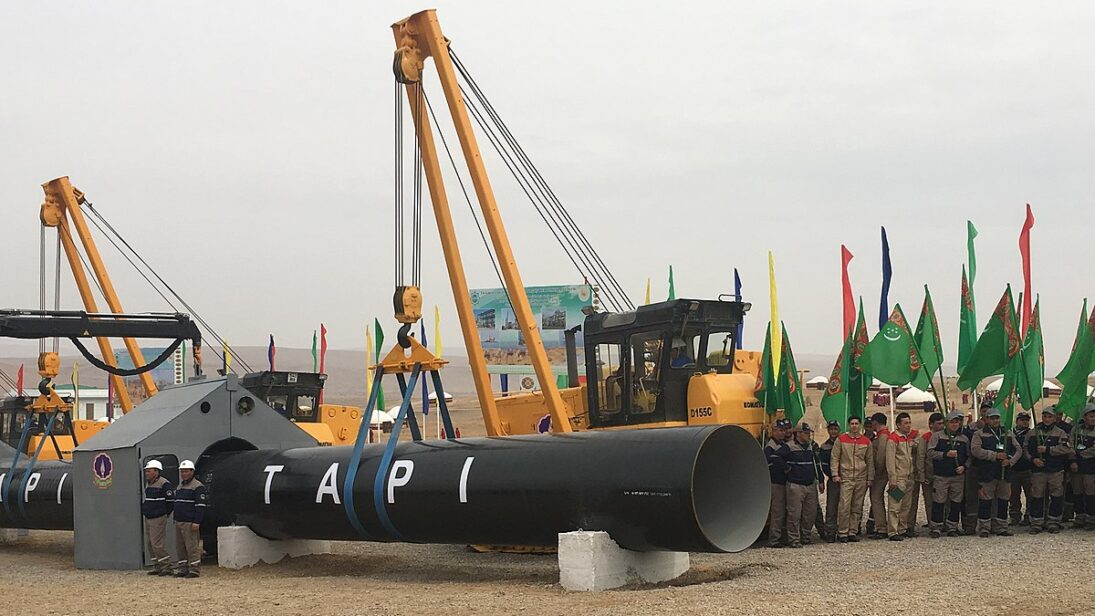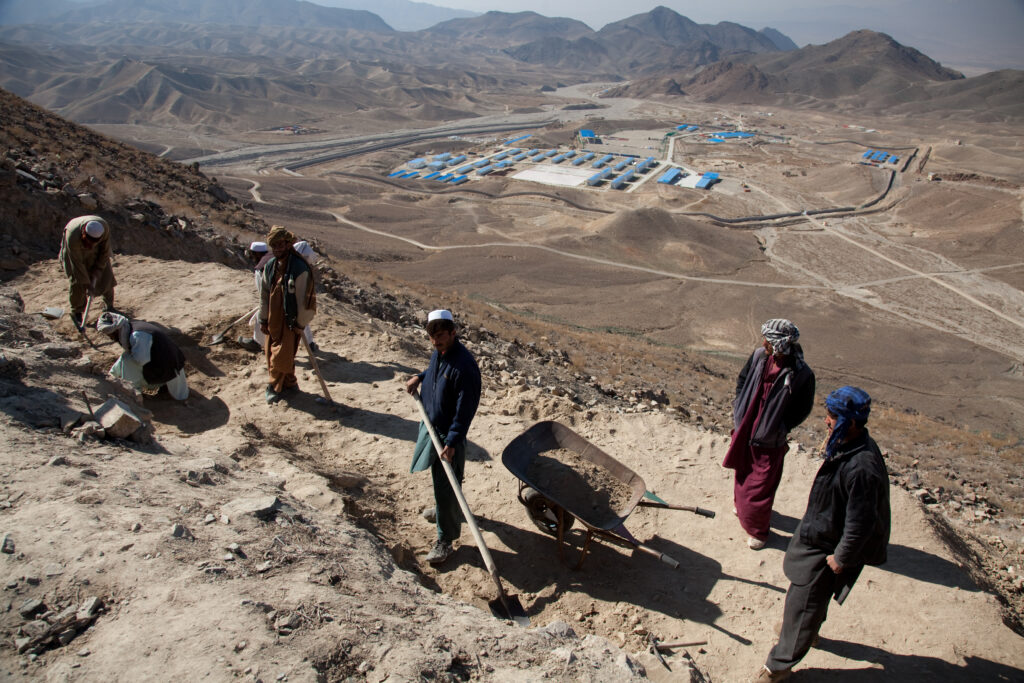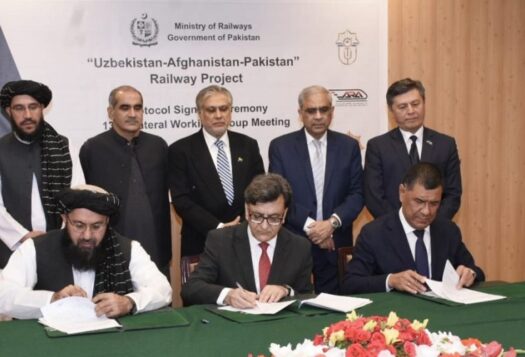
The United Nations recently warned that a funding shortfall could severely impede humanitarian aid to millions of Afghans. Yet donors have provided only 6 percent of the requested humanitarian funding for Afghanistan for 2024, with the UN securing only USD $290 million out of the required USD $3.06 billion. Indrika Ratwatte, Afghanistan’s humanitarian coordinator, emphasized the need for increased financial support from the international community, citing this critical funding gap.
Meanwhile, Afghanistan’s economy is at a critical juncture, as the World Bank estimates indicate that the country’s real GDP growth has declined by 26 percent. Afghanistan’s economy is predicted to further stagnate until the end of 2025. Fluctuating export figures are also impediments to the country’s economic stability. For instance, 2023 saw a 34 percent increase in the overall merchandise trade imbalance, going up from USD $4.4 billion in 2022 to USD $5.9 billion in 2023. Half of Afghanistan’s population is already living in poverty, with 15 million out of a total population of 42.80 million facing food insecurity. Kanni Wignaraja, Director of United Nations Development Program (UNDP)’s Regional Bureau for Asia and the Pacific, noted that 69 percent of Afghans are struggling with poverty exacerbated by continuous natural disasters, further setting back development efforts.
These challenges underscore the need for financial reforms, making it critical for the Taliban regime to prioritize infrastructure investments, while diversifying trade partnerships, and empowering small and medium enterprises, as crucial pathways to sustainable economic growth. Addressing these priorities and fostering international cooperation are essential to unlocking Afghanistan’s economic potential and overcoming developmental obstacles.
Harnessing Infrastructure Investments and Trade Diversification
Infrastructure projects, such as the Turkmenistan-Afghanistan-Pakistan-India (TAPI) pipeline, the Aynak copper extraction project, and the Central Asia South Asia Electricity Transmission and Trade Project (CASA-1000), are capable of driving economic transformation in Afghanistan. The TAPI pipeline, for instance, holds promise for Afghanistan to be able to diversify energy sources, reduce reliance on imports, and generate revenue through transit fees. Likewise, the Aynak mine, with its estimated reserves of over 11.08 million tons of copper, presents opportunities for further value addition, job creation, and export revenue.
CASA-1000 is a USD $1.2 billion regional power project for power transmission from Central Asia to South Asia designed to enhance energy connectivity, facilitate electricity trade, and stimulate economic growth across participating countries. In Afghanistan, several provinces such as Kunduz, Panjshir, Baghlan, Kapisa, Kabul, Laghman, and Nangarhar are poised to benefit socio-economically from the CASA-1000 project when it becomes operational. Out of the project’s total budget, USD $360 million will be spent in Afghanistan, while USD $260 million was previously put in by the World Bank under the previous government.
The Asian Development Bank’s projections on the economic impact of CASA-1000 highlight the benefits of enhanced energy cooperation and regional connectivity for Afghanistan’s economy as well as other partner countries. However, failure to complete and operationalize the project could result in substantial financial and economic losses—including the loss of USD $1 billion in stranded assets—which will be suffered by Pakistan, Tajikistan, and the Kyrgyz Republic.
These challenges underscore the need for financial reforms, making it critical for the Taliban regime to prioritize infrastructure investments, while diversifying trade partnerships, and empowering small and medium enterprises, as crucial pathways to sustainable economic growth.
Infrastructure investments are strategically significant to complete crucial projects and bolster investor confidence in Afghanistan’s economic prospects. However, these projects face several risks at the moment including technical and logistical issues, political and governance instability in the country, and security challenges. Given the Taliban regime’s lack of international recognition and limited official relations with many governments, they are faced with many impending challenges including financial sanctions, restricted access to state assets abroad, and restrained diplomatic relations. These impediments complicate the implementation of measures such as strengthening security, enforcing uniform policies, combating corruption, facilitating funds from international organizations, thorough technical planning, and developing local expertise. Thus, the Taliban regime must secure global interest by meeting the international community’s demands. This includes forming an inclusive government, pursuing moderate policies, especially on human rights and girls’ education, and combating terrorism.
Successfully implementing infrastructure projects under the Taliban regime, despite the lack of international recognition, requires strategic approaches. Engaging with international NGOs on humanitarian grounds and establishing transparent, anti-corruption governance could help gain the trust of donors and investors. Alternatively, regional economic cooperation with countries like India, Iran and China, can also be beneficial. For instance, Somaliland is a similar example, which, despite lacking international recognition, developed the Berbera Port through a partnership with Dubai-based DP World. Similarly, for Afghanistan, strategic partnerships and transparent international collaboration are crucial for facilitating significant infrastructure projects while addressing delays, management issues, and corruption effectively.
Furthermore, shifting geoeconomic dynamics also hold sway over Afghanistan’s export market, underscoring the need for trade diversification and resilience. For instance, while exports to Afghanistan’s major trade partner, neighboring Pakistan, have experienced a 24 percent decline, the uptick in food exports to Iran and India underlines the prospects for expanding trade partnerships and further fostering economic cooperation. Recent engagements by the Taliban’s leadership, therefore, signal efforts to overcome historical tensions and regional connectivity and economic cooperation despite ideological differences and border security concerns.
For instance, the Taliban already plans to invest USD $35 million in Iran’s Chabahar Port to reduce Afghanistan’s reliance on Pakistan’s ports amid deteriorating relations with Islamabad, which have led to several border closures and trade disruptions, adversely impacting Afghanistan’s economy. Although a substantial portion of the country’s spending is subsidized by foreign aid, this investment reflects a strategic effort to reduce long-term economic dependencies and enhance trade routes, aiming to create a more stable and self-sufficient economy.

Addressing Banking Challenges and Fostering Financial Reforms
Addressing banking restrictions and implementing financial reforms are pivotal tactics to unleash Afghanistan’s economic potential. With many bank shareholders and officials departing the country, liquidity shortages and withdrawal restrictions have cast a shadow over public confidence in the banking system.
In February 2024, the Taliban’s Deputy Prime Minister for Economic Affairs, Abdul Ghani Baradar acknowledged these issues and urged bank officials to return and address the liquidity problems plaguing several private banks. Despite claims of progress by Taliban officials, however, concerns persist regarding the adequacy of funds in private banks and the diversion of deposits, eroding public trust.
As Afghanistan grapples with these challenges, economic experts emphasize the imperative for banks to allocate resources effectively, particularly towards vital sectors like reconstruction, agriculture, and industry, to rebuild public trust and foster economic growth. By enhancing access to credit, promoting transparency, and fortifying regulatory frameworks, Afghanistan’s de facto leadership can create an enabling environment for investment and entrepreneurship.
Nevertheless, the biggest impediments projected to hinder those strategies may be the lack of proper financial infrastructure and political stability. To address such issues, the Taliban regime and other stakeholders need to focus on establishing a secure political framework and ameliorating the country’s financial system.
However, the international community must play a crucial role in this process. The current sanctions and punitive measures on the de facto regime are exacerbating the dire living conditions for millions of Afghans. These measures hinder the delivery of humanitarian aid, further entrenching poverty and instability. It is imperative that external actors adjust and ease these sanctions, if only to facilitate the flow of humanitarian assistance to the public and support economic recovery.
For the Taliban, addressing banking constraints and promoting financial transparency are essential for rebuilding trust and attracting investment.
International financial institutions could unfreeze Afghan assets under strict conditions only to ensure funds are directed towards humanitarian purposes and economic stabilization. Providing technical assistance to strengthen Afghanistan’s financial management is also essential. Moreover, facilitating international financial transactions and promoting investment with guarantees can help stabilize the Afghan banking sector and restore public trust.
Challenges Faced by Afghan Businesses
Amidst Afghanistan’s economic challenges, the struggle of Afghan businesses to regain pre-August 2021 operational levels is evident, reflecting a broader trend of resilience amidst adversity. Based on the World Bank’s survey, over one-third of firms operate below capacity, and eight percent, primarily woman-owned businesses, are temporarily or permanently closed. Although the private sector has shown signs of recovery since November 2021, it faces persistent hurdles, notably a decline in demand for goods and services.
Small and medium enterprises have been particularly affected, reporting an 80 percent reduction in demand compared to 69 percent for larger firms. Compounded by challenges in the banking sector limiting domestic and international transactions, businesses increasingly rely on cash-based transactions and the Hawala payment system. As Afghanistan navigates these economic complexities, fostering a supportive environment for business growth becomes imperative for sustainable recovery and prosperity. This is possible through stabilizing the banking sector by implementing transparent banking reforms, credit for businesses, streamlining financial regulations, and providing tax incentives to small and medium sized enterprises.
Conclusion
Afghanistan’s economic revival hinges on strategic investments in infrastructure, trade diversification, and financial reforms. The Taliban regime must prioritize projects such as the TAPI pipeline, Aynak copper extraction, and CASA-1000, which can unlock new growth opportunities, create jobs, and bolster regional connectivity for economic growth. For the Taliban, addressing banking constraints and promoting financial transparency are essential for rebuilding trust and attracting investment.
Other stakeholders, such as the international community can support these efforts by providing technical assistance and funding, contingent on the Taliban’s adherence to inclusive governance and human rights standards. Encouraging the Taliban regime to undertake these reforms can be achieved through international cooperation and economic aid, contingent on measurable progress in these areas.
Also Read: Afghanistan in 2023: Further Restrictions on Women’s Rights Bring International Recognition into Question.
***
Image 1: Ceremony of the TAPI Pipeline via Wikimedia Commons.
Image 2: A mining location in Afghanistan via Flickr.


